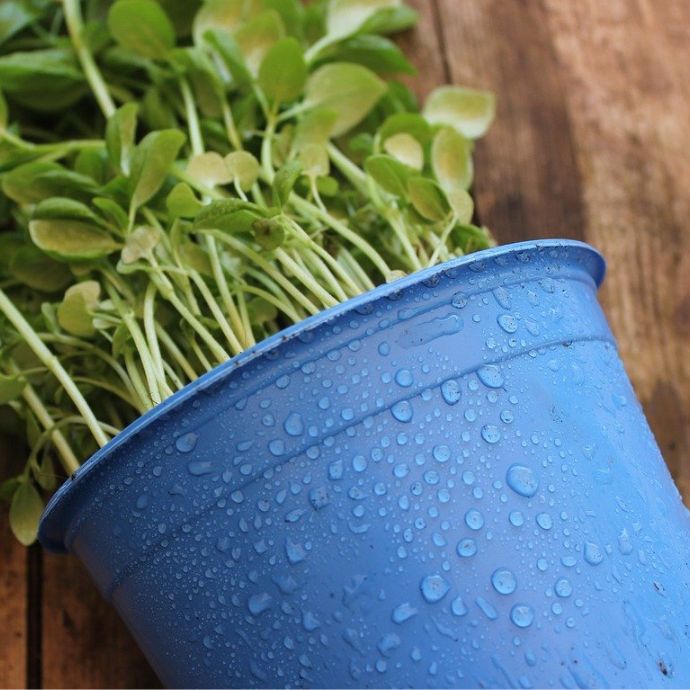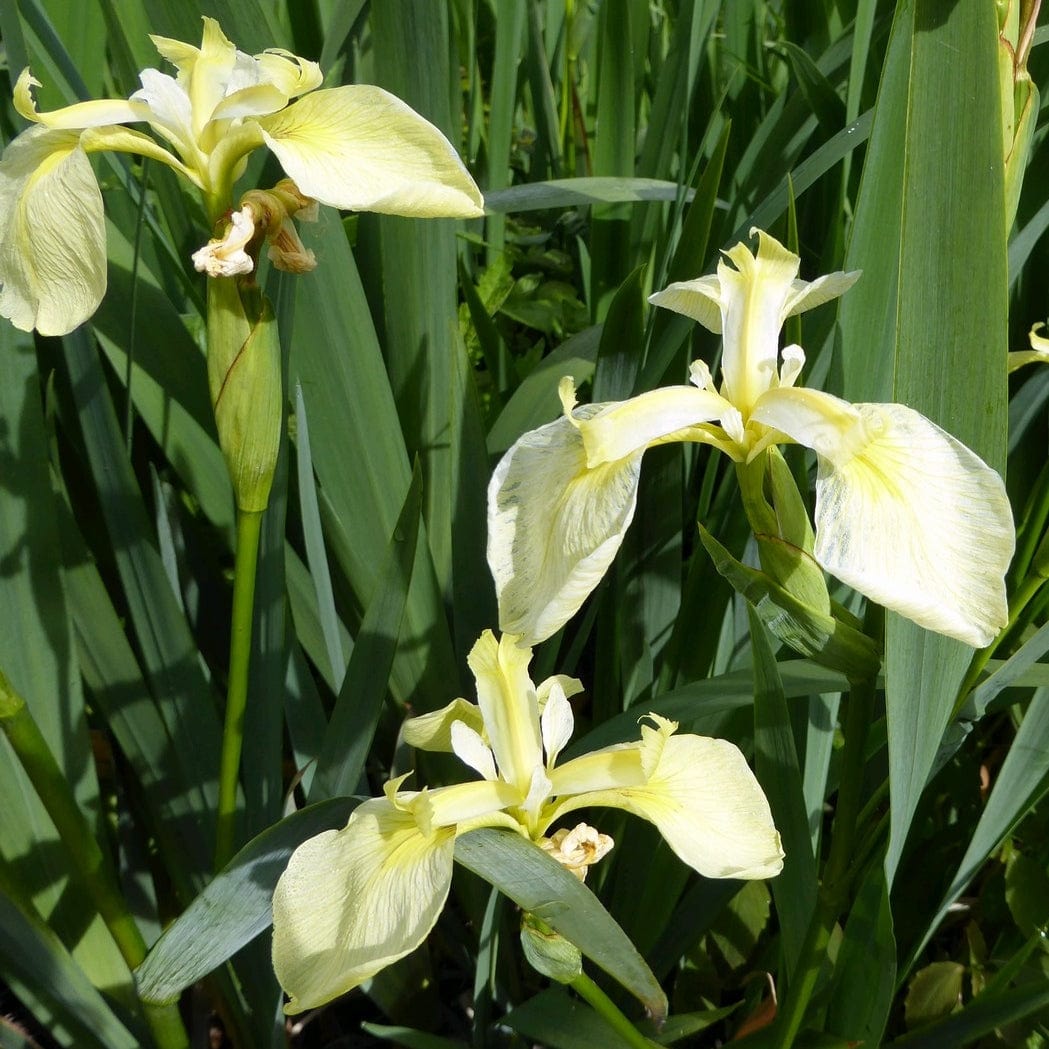Advice & Inspiration
How to Make a Bog Garden

If you live somewhere that gets a lot of rain or that’s prone to waterlogging, then you’ll probably already know the struggle of creating the garden that you dream of. The issue is that many gardeners try to fit a square peg into a round hole, so to speak. That’s to say, they try to make unsuitable plants work for their garden. Once you realise this, however, you can begin to make your space work for you, rather than the other way around.
Enter stage left the bog garden. Not the most enticing name ever, we know, but hear us out because these marshy gardens could be just what you’ve been looking for, without you even knowing it. In this post, we’ll be exploring what a bog garden is, how to repurpose your garden into one, the kinds of plants that work well in a bog garden, and much, much more.
Jump to:
- What is a bog garden?
- Working with an existing garden
- Creating a bog garden from scratch
- Making a container bog garden
- Best plants for bog gardens
What is a bog garden?
Not to be confused with a BOGOF garden, where you plant a load of self-seeding plants and get more than you bargained for a few years down the track, bog gardens are those that make use of a sunken area of your garden that’s prone to flooding, or transform a marshy garden in its entirety. At its simplest, a bog can be thought of as any ground that’s particularly poorly-draining, as well as ground that surrounds water (a pond, for instance).

Working with your existing garden
Most people who create a bog garden do so out of necessity; their outdoor space is so damp, sodden, moist, squelchy (insert any other water-related word) that their hand has been forced somewhat. But here at Roots, we think framing it in such a way is altogether too negative, because bog gardens, when properly implemented, can be genuinely delightful! Let’s first look at how you make a pondside bog garden.
Excavating your bog garden
Before doing anything else, you need to mark out the area you’re going to use to make your bog garden adjacent to your pond. Excavate the soil in this area to a depth of roughly 20 centimetres to half a metre, depending on how much water you want your bog garden to hold, leaving an elevated ridge between the pond and bog to act as a sort of dam between the two. Aim to create a shallow-sided dish shape, so that should any unfortunate creature make its way accidentally into trouble, it can easily get out again.
Lining your bog garden (or not)
Whether or not your line your bog garden depends on how waterlogged your garden is (or isn’t). A spot with good drainage will probably require lining, while a perennially waterlogged patch is less likely to need a liner. Similarly, if you want your bog garden to be particularly wet, then a liner is helpful, while a drier, semi-bog garden might benefit from either perforated liner (or no liner, whatsoever). We’d recommend using a PVC or butyl rubber liner.
Refilling
Once lined – if you are lining your bog garden – you need to refill the excavated area with improved, nutrient-rich soil. Unlike your pond, which benefits from neutral or nutrient-poor soil to prevent algal buildup, bog plants love a nice, fertile soil. If you’re worried about your bog garden drying out, then you may want to install a soaker hose, either just below the soil surface or on the surface itself, and covered with some mulch.
Planting
Once your bog patch has been filled with soil, you can get planting. We’ll come onto specific suitable plants a little later in the post, but the main thing is that the plants need to be moisture-loving (surprising, we know). If your bog garden includes a lot of water, then looking at marginal pond plants is advised. Conversely, if your bog garden has been designed with pretty good drainage, then plants that like moisture (but not standing water) are preferable.

Creating a bog garden from scratch
If you’re a lover of pond (or pond-adjacent) plants, then you may well want to create your own bog garden and leave those landlubbing, terrestrial plants behind. So, the question is, how do you go about making a bog garden if your space is, well, for lack of a better word, dry? You need to make your own bog, that’s what you need to do.
The same principles from above apply when creating a standalone bog garden, separate from any pond or waterlogged patch of land, you just need to be more mindful of keeping the bog moist. If possible, choose a shaded or part-shaded location to avoid your soil getting dried out by the sun.
Inserting a leaky drip hose or soaker hose is also recommended to provide extra irrigation when needed. Whereas with a pondside bog garden you might puncture the liner to keep some drainage, with a bog garden in a drier spot, it can benefit from a non-punctured lining to retain more moisture.

Creating a containerised bog garden
How to make a bog garden in a container – it’s a good question, but fortunately, one with a pretty easy answer. You just make a mini version of what we’ve talked about above. Using an old farmhouse-style ceramic sink, metal bath or barrel, you can create a bog garden no matter the space available to you.
Line your container with PVC pond liner, and if you live somewhere that receives serious quantities of rainfall, or you’re using a particularly small container, then drilling a couple of holes into the container’s side to allow excess moisture to drain through can be beneficial. Remember, we want our bog garden plants to be in moist soil, but not waterlogged, standing water.
For your planting medium, a mixture of coarse horticultural sand and coir compost (in a rough ratio of 1:2) is a good bet; this allows good aeration within the soil as well as retaining moisture. Give your soil a good soak and allow it to settle for a few days or up to a week. After this, you can get planting!
What plants are best for a bog garden?
So, you’ve got your bog all set up and ready to go, now it’s the fun part. Many plants fall under the bog plant category, including perennials, grasses and ferns.
For your perennials, opt for plants such as loosestrifes, hostas, irises and calthas. For more waterlogged soil, consider arum lilies, cardinal flowers, spearworts and monkey flowers. When it comes to your grasses, rushes, flag grasses and sedges all work well. And for ferns, lady ferns, male ferns and ostrich ferns are all viable options.

Final thoughts
So there you have it, bog gardens in all their glory. If you’re after a bit of inspiration for your home bog garden, then we’d recommend visiting the bog gardens at Wakehurst, Howick Hall and Dyffryn Fernant. And for more information on pond plants, make sure to check out our beginner’s guide.































